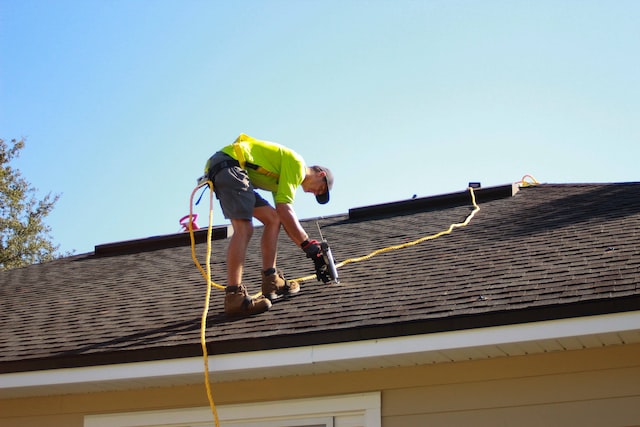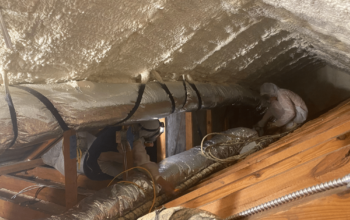As a property owner, it’s important to be aware of the different types of roofing available and what factors you should look for when hiring a roofing contractor. This guide will cover the different types of roofing available, as well as how to prepare your home or business for a new roof installation. By the end, you’ll have all the tips and tricks you need to ensure a smooth and successful roofing experience.
Types of Roofing Material Available
- Asphalt Shingles: The most popular type of roofing in America, asphalt shingles are made of fiberglass or organic matting that is covered with asphalt and ceramic granules. They are relatively inexpensive and easy to install, making them a great option for both residential and commercial properties, as suggested by John Beal Roofing service experts.
- Metal Roofs: Metal roofs are gaining in popularity thanks to their durability, sustainability, and energy efficiency. They are made from steel, aluminum, copper, or zinc and can last up to 50 years with proper maintenance.
- Flat Roofs: Commonly found on commercial properties, flat roofs are exactly what they sound like—a flat surface with a slight slope to help with drainage. Flat roofs can be made from a variety of materials, including asphalt, rubber Membrane, gravel, and solar panels.
- Slate Roofs: slate roofs have been around for centuries and are known for their beauty and durability. While they are one of the most expensive roofing options available, they can last up to 100 years with proper maintenance.
What to Look For When Hiring A Residential or Commercial Roofing Contractor
- Make sure the contractor is licensed, insured, and bonded. This will protect you from any liability in case of an accident during the roofing process.
- Get at least three estimates before hiring a contractor. This will give you a good idea of what the project will cost and allow you to shop around for the best price.
- Make sure the estimate is in writing and includes a detailed breakdown of labor costs, materials costs, etc. This will help avoid any unexpected charges later on down the line.
How To Prepare For A New Roof Installation
1) Remove all loose items from your yard that could be blown around by the wind during the installation process (e.g., lawn furniture and children’s toys).
2) If there are trees near your house/building, trim branches that could fall on the roof during installation or remove them entirely if possible.
3) Make sure there is access to your home/building for the roofing contractor’s equipment (e.g., scaffolding, ladders).
4) Cover any delicate items inside your home/building (e.g., paintings, vases) with plastic sheeting to prevent them from getting dusty or damaged during installation.
Roofing Installation Tips
1) The installation process will create a lot of noise, so be sure to warn your neighbors in advance, so they aren’t caught off guard.
2) There will also be dust produced during installation, so it’s a good idea to cover any furniture or floor coverings inside your home/building that could be affected (e.g., carpets, drapes).
3) Be sure to clear any vehicles out of your driveway or parking area so that the roofing contractor has room to work safely without worrying about damaging them.
4) If you have pets, it’s best to keep them indoors during the installation process as they could get scared by all the noise and commotion going on outside.
Conclusion:
Installing a new roof is a big project, but by following these tips, you can ensure that it goes smoothly from start to finish. If you take the time to do your research and prepare ahead of time, you’ll be able to sit back and relax while your new roof is being installed, safe in the knowledge that everything is under control.
Related Posts













Amazing work! I like how you include the idea of roofing installation tips. Thank you for sharing. Let us know if you would write about quality roof hatches for your upcoming post.